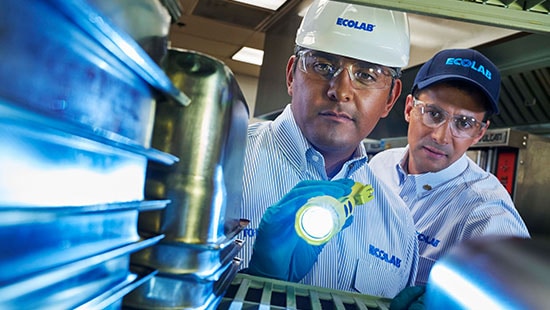Rodent Control Training for Employees

Rodents are prolific breeders, and because they're rarely seen during the day or when operation is in full swing, an infestation can develop quickly. Rodent control training for employees is a critical part of an overall pest-management program and can greatly increase success of pest control efforts. As your first defense against rodents, employees should be aware of how they can enter your facility, the signs of their presence and the damage they can cause.
Rodent Entry
Rats and mice can be wily creatures. They are attracted to structures by the warmth and odors emitted, and they will scurry in through open doors or gaps or hitchhike in on incoming goods. Once in the facility, rodents can consume and contaminate foods and be a source of audit/inspection failures and fines.
Signs of Rodent Presence
Live or dead rats or mice are the most obvious sign of rodent presence, but there are other signs as well. This includes droppings, piled nesting materials, gnawed packaging, or oily-looking smudge marks and/or hairs along walls, in corners and other pathways along which rodents frequently travel. Presence may also be evidenced by a skittering sound on floors or rafters or even a foul odor if a large infestation has developed. All workers, particularly those on the sanitation shift or other off-hour duties, should be aware of these signs.
Rodent Damage and Contamination
Rodents will urinate and drop feces as they scurry around the facility. This spreads bacteria and contamination beneath equipment, behind walls, across food surfaces/packaging and even food itself. While they don’t necessarily consume a lot of food, rodents will damage packaging by gnawing their way to the product, which introduces contamination. According to the Centers for Disease Control and Prevention, rodents can transmit more than 35 diseases to humans through direct handling or contact with their urine, feces, or saliva; this same contact with food can be a source of foodborne diseases, such as salmonellosis.
More Pest Resources
Whether your food facility is located in the frigid north or hot south, winter months mean cooling weather, which can significantly impact pest behavior.
Rats and mice can be a public health concern, cause damage to your inventory and facility and hurt your brand reputation.
Large flies, including house flies, blow/bottle flies and flesh flies breed in places every restaurant has: Dumpsters and garbage.
Whether you're running a restaurant, hotel, warehouse or other commercial facility, Ecolab can help you win the fight against pests.



